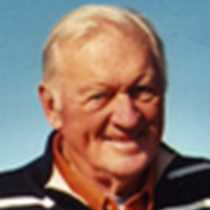Palouse River
Although the M/V Sea Lion’s central theme was Lewis & Clark, exactly 200 years to the day or week, they passed through the area. Geologic attractions caused us to explore byways of this historic natural highway.
For example, kayaks and cataclysms (nature’s own) were the morning themes. Passengers in Zodiacs explored the backup waters of the Palouse River mouth, while kayakers nosed into crevices and bays in the same area. Mid-morning the entire guest contingent boarded the famous yellow school bus for the short ride across the Scablands to Palouse Falls.
Although the word “Scablands” might not be pleasant to the ears, the term was coined by Professor J Harlen Bretz in the 1920s to describe the washed, undulating landscape of the Columbia River Plain. Populated by domestic heads of cattle, mule deer, rodents, magpies, eagles, and the trickster coyotes, the green and brown hills sprinkled with basalt monuments are a rare sight.
For years, Bretz walked this land with his students. Without the aid of aerial photos, airplane flights, and a host of scientific instruments, Professor Bretz reached what was at first thought to be a startling conclusion: this mottled, endless scene was created by great floods from the melting Cordilleran Ice Sheets. Time – and science – proved Bretz’s theory to be correct. The area is not overrun by tourists because of its remote location, but local college and university geology classes have found it to be a perfect outdoor laboratory.
Continuing downstream between the dramatic basalt walls of the Snake River, the M/V Sea Lion guests were treated to a peaceful, majestic route. Except for glimpsing an occasional wheat ranch or railroad track, the view is exactly what Meriwether Lewis and William Clark saw on their 1805 westward path (when returning in 1805, they took the advice of Chief Yellepit of the Walla Walla Indian nation and followed a land route by horse, saving 85 miles).
In the afternoon, the historian helped us catch up with Lewis & Clark by reading from the Corps Journals and describing the party’s return journey. A summary of the expedition’s results, both to the Oregon Country and the nation, concluded the day’s activities.
Although the M/V Sea Lion’s central theme was Lewis & Clark, exactly 200 years to the day or week, they passed through the area. Geologic attractions caused us to explore byways of this historic natural highway.
For example, kayaks and cataclysms (nature’s own) were the morning themes. Passengers in Zodiacs explored the backup waters of the Palouse River mouth, while kayakers nosed into crevices and bays in the same area. Mid-morning the entire guest contingent boarded the famous yellow school bus for the short ride across the Scablands to Palouse Falls.
Although the word “Scablands” might not be pleasant to the ears, the term was coined by Professor J Harlen Bretz in the 1920s to describe the washed, undulating landscape of the Columbia River Plain. Populated by domestic heads of cattle, mule deer, rodents, magpies, eagles, and the trickster coyotes, the green and brown hills sprinkled with basalt monuments are a rare sight.
For years, Bretz walked this land with his students. Without the aid of aerial photos, airplane flights, and a host of scientific instruments, Professor Bretz reached what was at first thought to be a startling conclusion: this mottled, endless scene was created by great floods from the melting Cordilleran Ice Sheets. Time – and science – proved Bretz’s theory to be correct. The area is not overrun by tourists because of its remote location, but local college and university geology classes have found it to be a perfect outdoor laboratory.
Continuing downstream between the dramatic basalt walls of the Snake River, the M/V Sea Lion guests were treated to a peaceful, majestic route. Except for glimpsing an occasional wheat ranch or railroad track, the view is exactly what Meriwether Lewis and William Clark saw on their 1805 westward path (when returning in 1805, they took the advice of Chief Yellepit of the Walla Walla Indian nation and followed a land route by horse, saving 85 miles).
In the afternoon, the historian helped us catch up with Lewis & Clark by reading from the Corps Journals and describing the party’s return journey. A summary of the expedition’s results, both to the Oregon Country and the nation, concluded the day’s activities.




